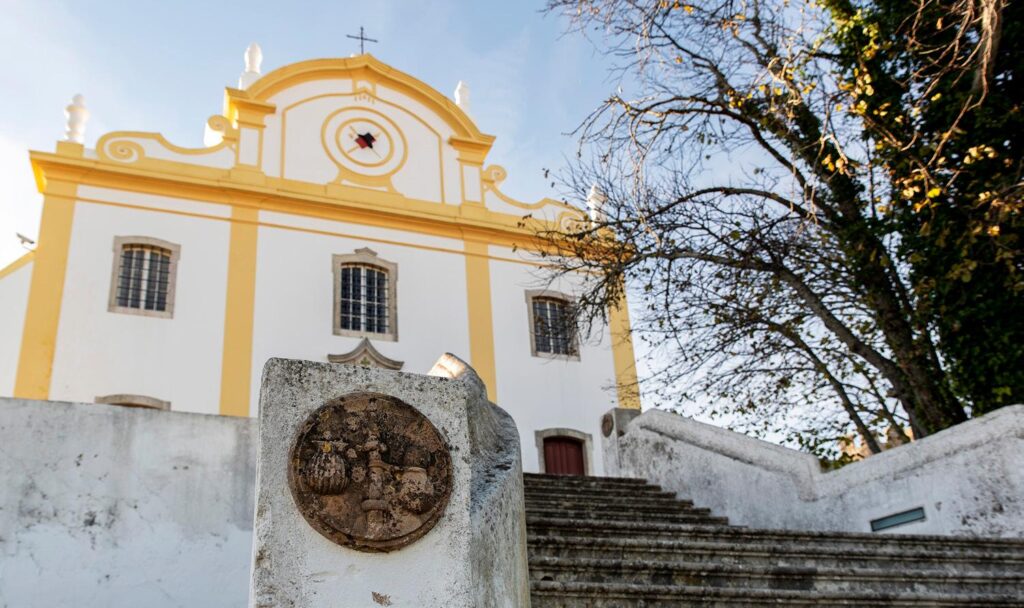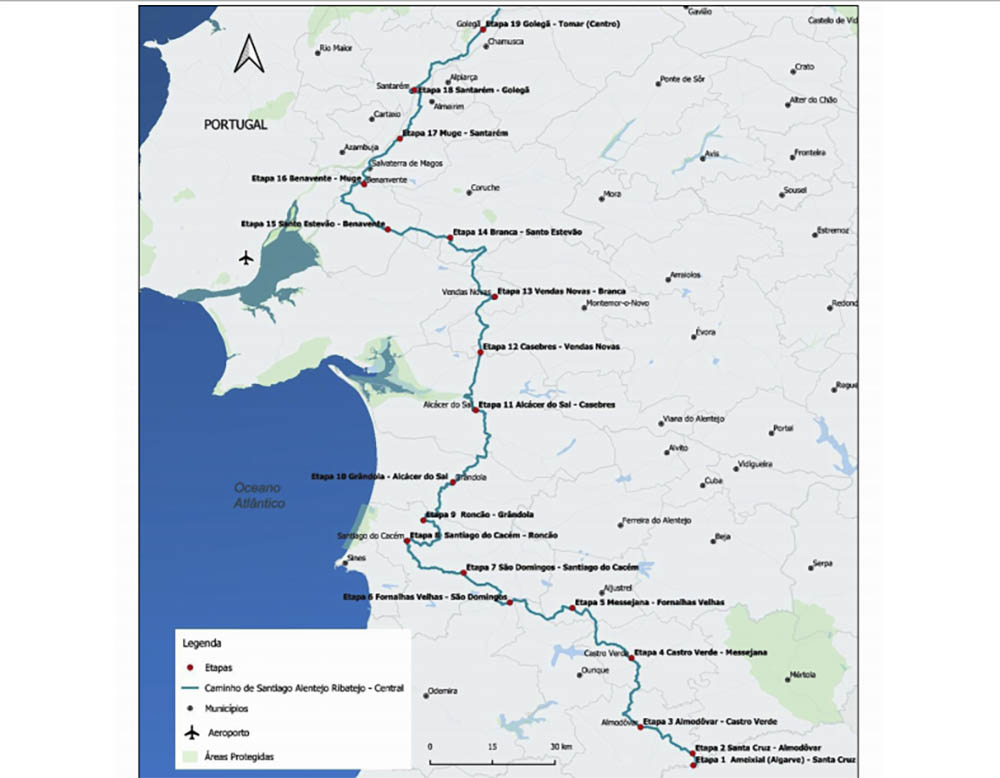The first Portuguese Way to Santiago has just been certified by a joint decree of the secretaries of State for Tourism, Rita Marques, and for Cultural Heritage, Ângela Ferreira. It is the Portuguese Way of Santiago Central – Alentejo and Ribatejo, which, curiously, starts from the village of Ameixial, in the Algarve council of Loulé, in the middle of the Serra do Caldeirão.
Responding to an application led by the Regional Tourism Authority of Alentejo-Ribatejo, this is the first implementation of a process started in 2019, with a view to certifying the routes that make up the Ways of Santiago in national territory, and which aims to safeguard, enhancement and promotion of the Portuguese Way of Santiago.
For this purpose, a national coordination body was created, the Certification Committee, composed of four members, with technical skills in the area of culture or tourism, which is responsible for analyzing the applications, and an Advisory Board, where it is The areas of central and regional Public Administration relevant to this process are represented, in addition to the representative of the Catholic Church and the Pilgrims' Associations.
This certification recognizes the fulfillment of a set of criteria that aim to guarantee, among others, the authenticity of the itinerary, its uninterrupted character in the territory and in time, responsible management and appreciation of the offer, greater safety, comfort and better experience for the pilgrim, also promoting the connection with local communities and testimonials of interest.
The Portuguese Way of Santiago Central – Alentejo and Ribatejo has a length of 435 kilometers, is divided into 19 stages and crosses 16 municipalities.
The certification process, promoted by the Regional Tourism Authority of Alentejo and Ribatejo in partnership with the respective municipalities, includes a Management Plan for the itinerary, which provides for a set of valorization actions, to be carried out over the next three years.
Certification processes for other itineraries are also underway, although in different stages of development, which, if successfully completed, will soon reinforce the route network of the Camino de Santiago in Portugal, from the South to the North of the country. .
The enhancement and projection of the Portuguese Way to Santiago is of «particular importance for the Directorate-General for Cultural Heritage and for Tourism in Portugal. On the one hand, this process allows to preserve, protect and make known an itinerary that reflects centuries of history and national cultural heritage», stresses the Ministry of Culture's GEPAC in a press release.
On the other hand, "it also falls within the scope of the 2027 Tourism Strategy, which seeks to consolidate Portugal's notoriety as a religious tourism destination, associated with the assertion of cultural and natural values that differentiate the territories, with the dynamization of the activity of tourist agents and, in this particular case, to cross-border cooperation'.
Secretary of State for Tourism, Rita Marques, stresses that «with the resumption of tourist activity, a progressive normalization in the enjoyment of pilgrimage itineraries is expected, a movement that has a particular impact on low-density territories and on the attenuation of tourist seasonality. ».
The Assistant Secretary of State and Cultural Heritage, Ângela Ferreira, highlights that «this first certification of a Portuguese Way to Santiago is a fundamental step in the preservation and dissemination of this unique itinerary of European cultural heritage, a historical manifestation of an inalienable right to communication and a place par excellence for promoting the meeting of cultures and common understanding».
The recent decision of the Holy Jacobean Year (2021) to extend throughout the year 2022, due to the circumstances caused by the pandemic, as well as the expected certification of other itineraries throughout this year, will be opportunities for the dynamization and promotion of the Way of Santiago in Portugal and a factor of attractiveness of the country and the territories it crosses.
In the joint order, published this Monday in Diário da República, it can be read that «the territory crossed by the Portuguese Way of Central Santiago — Alentejo and Ribatejo has a vast density of material and immaterial remains associated with the Jacobean cult and pilgrimage» .
The itinerary crosses «the ancient possessions of the Order of Santiago, whose statutes expressly provided for the mission of protecting pilgrims and there are many examples of toponymy related to Santiago, in addition to the abundant Jacobean iconography present in the religious artistic heritage, where the Church stands out Headquarters of Santiago do Cacém».
“It was possible to identify many old places of passage and reception of pilgrims, as well as documentary accounts that attest to their presence since at least the XNUMXth century” adds the preamble of the dispatch.
«The management entity and its partners have implemented over the years, through persistent and systematic work, a plan to enhance the Camino de Santiago that created the necessary conditions to fulfill the certification criteria».
This Central Path starts from Ameixial, still in the Algarve, in the middle of Serra do Caldeirão. José António Falcão, in the chapter “The Way and the Worship of Santiago in Southern Alentejo”, from the book “On the Way under the Stars – Santiago and the Pilgrimage to Compostela”, wrote that “the identified traces confirm the transit of pilgrims along the old road Roman church that crosses the Serra do Caldeirão in Santa Cruz de Almodôvar; once one of the most used routes in the connection between the Algarve and the Alentejo, D. Afonso III came along it, at the head of his army, in 1249, to conquer Faro and Albufeira».
It is from Ameixial, connecting it to Santa Cruz, already in the Alentejo municipality of Almodôvar, that the first stage of this path starts. The following days of walking will pass through Almodôvar, Castro Verde, Messejana, through the village of Fornalhas Velhas, located in the fertile fields of the Santiago Valley, between the Sado river and the Campilhas stream, São Domingos, to reach Santiago do Cacém. From there, the Central Way will continue north, until it meets the Tagus River.
All information about the Central Path and its stages can be found here. The map this one.





















Comments